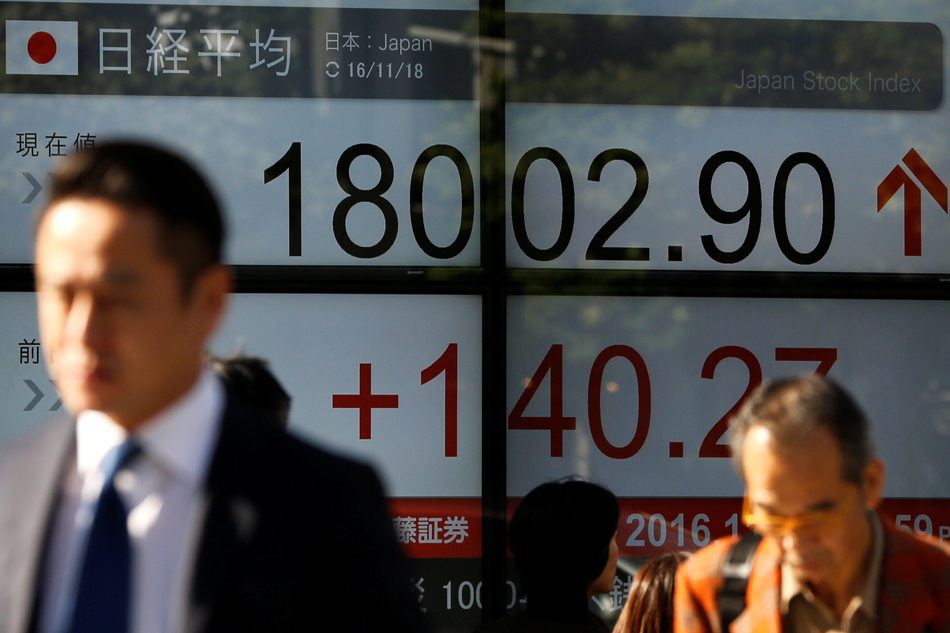
Stocks in Asia mostly slipped on Monday as investors awaited the resumption of U.S.-China negotiations in Beijing this week amid low expectations for a major breakthrough.
Shares in mainland China were mixed on the day, the Shanghai composite slipped 0.12% to 2,941.01, while the Shenzhen component and Shenzhen composite were fractionally higher at 9,354.28 and 1,574.95 respectively.
Hong Kong’s Hang Seng index dropped 1.16%, as of its final hour of trading, as tensions remain high in the city following another clash between protestors and the police over the weekend. Shares of life insurer AIA declined 2.02%.
“Hong Kong I think, in a business sense, is suffering from this sort of situation,” Richard Harris, chief executive at Port Shelter Investment Management, told CNBC’s “Squawk Box” on Monday.
“That’s likely to help Singapore and it’s probably likely to help the banks especially because it’s so easy to move money, cash money, from one jurisdiction to another,” Harris said.
Over in South Korea, the Kospi dropped 1.78% to finish its trading day at 2,029.48 — lower than its final close of 2018 — as shares of chipmaker SK Hynix plunged 3.51%.
The Nikkei 225 in Japan declined 0.19% on the day to 21,616.80, as index heavyweight and robot maker Fanuc’s stock fell 1.63%. The Topix also closed 0.19% to 1,568.57.
Shares of conglomerate Softbank Group soared 3.88% after the company’s Founder and Chief Executive Masayoshi Son told the Nikkei in an interview that he expects initial public offerings of portfolio companies in its Vision Fund “almost every month” by around next year.
Son also said Monday that Softbank will invest $2 billion in Southeast Asian ride hailing giant Grab, according to a Reuters report.
Australia’s S&P/ASX 200, on the other hand, rose 0.48% to close at 6,825.80.
Overall, the MSCI Asia ex-Japan index was 0.54% lower.
Meanwhile, Singapore’s DBS Group on Monday, ahead of the market open, posted a 17% increase in second-quarter profit, which came in at $1.6 billion ($1.2 billion) versus $1.37 billion a year earlier, beating estimates. The stock was 0.82% lower in afternoon trade.
U.S.-China trade talks are also set to resume this week, with a trade delegation from Washington scheduled to fly to China on Monday for negotiations with Beijing officials. Expectations for a major breakthrough are low, however, with National Economic Council Director Larry Kudlow telling CNBC last Friday that he “wouldn’t expect any grand deal. ”
Last Friday, strong earnings and better-than-expected GDP data pushed the S&P 500 and Nasdaq Composite to record highs. The S&P 500 gained 0.7% to close at 3,025.86, while the Nasdaq Composite rose 1.1% to finish its trading day at 8,330.21. The Dow Jones Industrial Average also closed 51.47 points higher at 27,192.45.
More than 40% of S&P 500 companies have reported quarterly earnings for the second quarter. Of those companies, 76.4% have posted a stronger-than-forecast profit, according to FactSet. The U.S. economy also expanded more than expected in the second quarter, growing 2.1% as compared to expectations of a 1.8% rise by economists surveyed in CNBC/Moody’s Analytics Rapid Update.
Meanwhile, Chinese industrial profits fell in June, according the the country’s National Bureau of Statistics on Saturday. Industrial profits fell 3.1% in June from a year earlier, following a 1.1% gain in May.
“The slowdown in profits lines up with the soft producer prices seen earlier in the month and also suggests margins are being impacted by the US-China trade war,” Tapas Strickland, an economist at National Australia Bank, wrote in a morning note.
The U.S. dollar index, which tracks the greenback against a basket of its peers, was at 98.053 after rising from levels below 97.2 last week.
The Japanese yen traded at 108.62 against the dollar after weakening from levels below 108 in the previous trading week, while the Australian dollar changed hands at $0.6908 after slipping from levels above $0.702 last week.
Oil prices declined in the afternoon of Asian trading hours, as international benchmark Brent crude futures slipped 0.6% to $63.08 per barrel and U.S. crude futures declined 0.39% to $55.98 per barrel.























